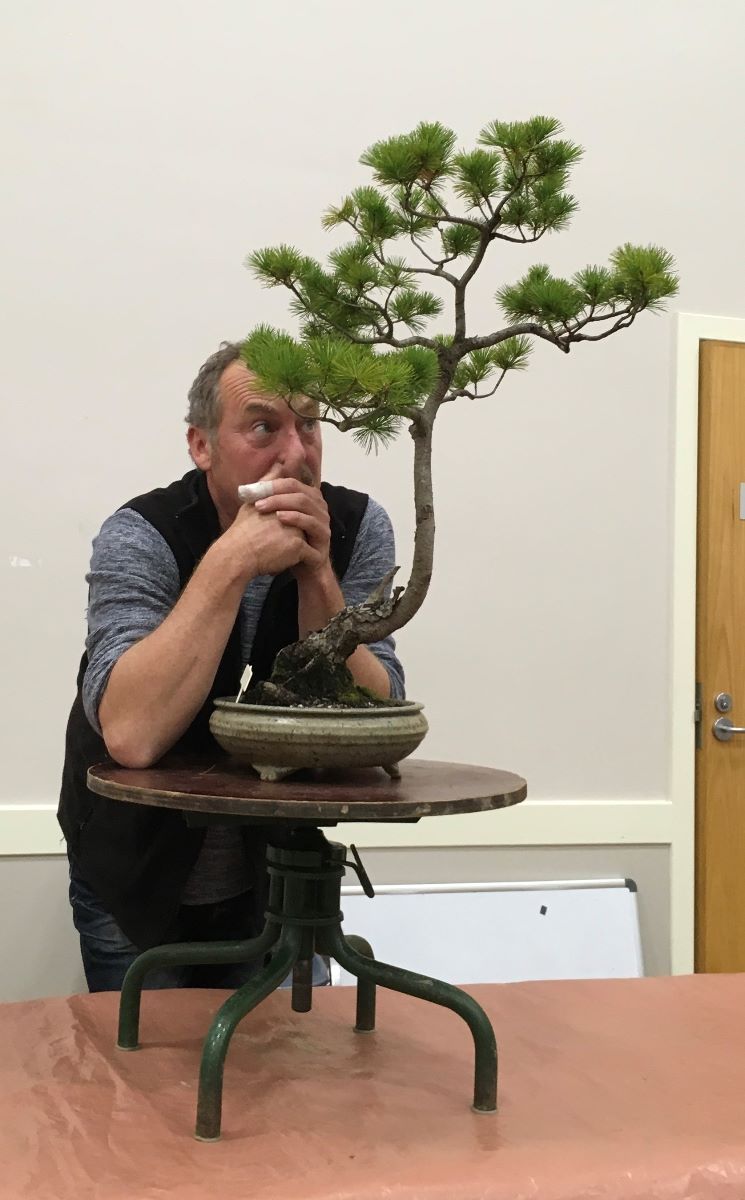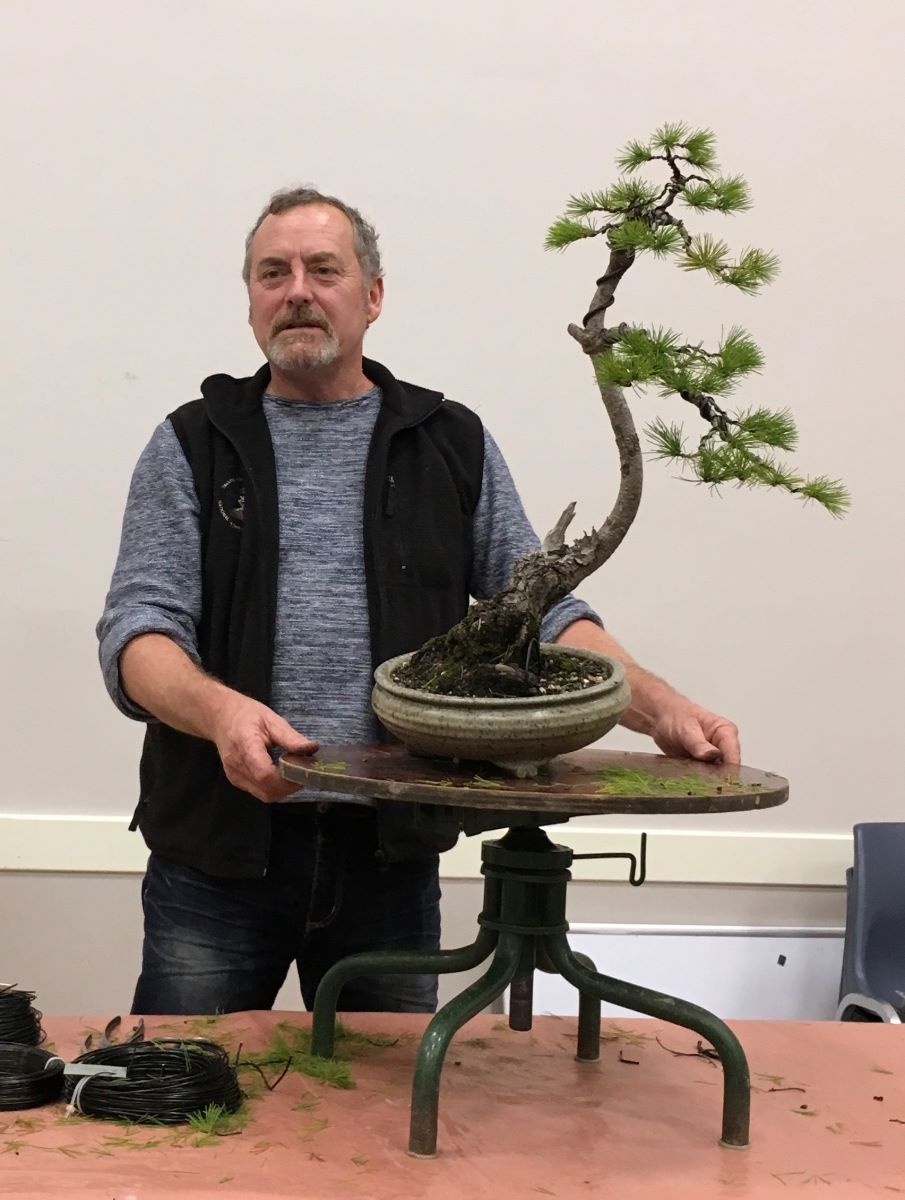Neil Ryan’s theme for the AABC Conference this year was how to move a tree that had been aesthetically pleasing and well styled in the past into its next iteration. Tony Bebb’s demonstration last month was a lesson in how to achieve this.
Tony chose an old Japanese white pine (Pinus parviflora) that while still pleasing could no longer be maintained in its present form. White pines or five needle pines are native to Japan and Korea and naturally grow in higher and drier mountainous areas than black pines and so are difficult specimens for humid areas like coastal Sydney or Queensland where Tony comes from. They are often grafted onto black pine root stock for more stable growth.
So what to do? Tony thought that this tree would lend itself to the literati style but pointed out this was one of the hardest styles to achieve well. (See Bonsai International, Issue 3, 1997 for an excellent discussion of this style.)

When styling, Tony’s mantra is ‘not what I can do to a tree but what I can do with a tree’ and with this in mind, he started with the tree’s positives. Its tall, slender form has a graceful feminine quality and it comes out of the soil at a nice angle. It has interesting ‘lumps and bumps’ but the angle is a bit placid and the trunk thin, the result of no sacrificial branch 25 years ago. The wide spreading branches, an artefact of how the tree has been grown, need more drama and power. White pines are flexible trees but don’t set very easily so Tony explained that there will be a need to do a bit of damage- to tear the fibres so they have to mend. To achieve this, Tony bends branches further than needed (causing damage) and then moves back to the desired position or alternatively makes small nicks along the horizontal lines that will need to heal.
As the pine stands now, it needs to be more powerful and branches will have to be removed to achieve this. Tony begins by cutting out opposite branches and reducing the mass on the left side of the tree. Next he takes out the top. Before wiring, Tony preps the branch- he removes buds going downwards, cuts back any stumps, removes growth at crutches and ideally leaves two branches at any point but three can be acceptable. In this case, Tony removes some needles but not too many due to the time of the year. In late winter, he would remove a lot more, perhaps 60%.
Japanese white pines are generally more open along the branches than other pines and so are easier to wire. However, to get the best result when positioning a white pine branch, it must be moved again and again with attention being paid to the natural twist of the branch (the direction it rolls when bent) and this needs to be taken into account when wiring. If a branch twists in an anti-clockwise direction, then it needs to be wired in an anti-clockwise direction. This is an important lesson- identify the natural twist of a branch before you start wiring. This repeated bending is like massaging the branch or flexing it and should be done until the branch bends easily. Copper wire is best for pines but if you are using aluminium, then there is nothing like overkill when choosing the size!
Tony wires the main branches (the bones of the tree) first and then designs around them. If the trunk isn’t straight then the branches shouldn’t be either and with this in mind the first branch was brought down separating it from the one above to reduce any bulkiness in this area.
The next level was brought down and reduced in length to keep the balance between the bottom branch and those above it. Tony likes to keep the points of ramification tight. Depth is as important as direction and in this tree the little branches have a big future.
Tony wired every branch at the top of the tree with the view of using as many as possible in the apex but cautioned about getting fixated on a bushy apex and the resulting pompom where none of the foliage can get enough energy. Mature trees have a rounded canopy, soft, like an umbrella. Think about the structure of an umbrella with spokes radiating outwards and aim for an open mature form. With this in mind, let the branches grow past where you want them and then cut back as an actively growing tree has more energy.

While this tree may be a ‘shallow individual’ at the moment, its future is certainly assured.
